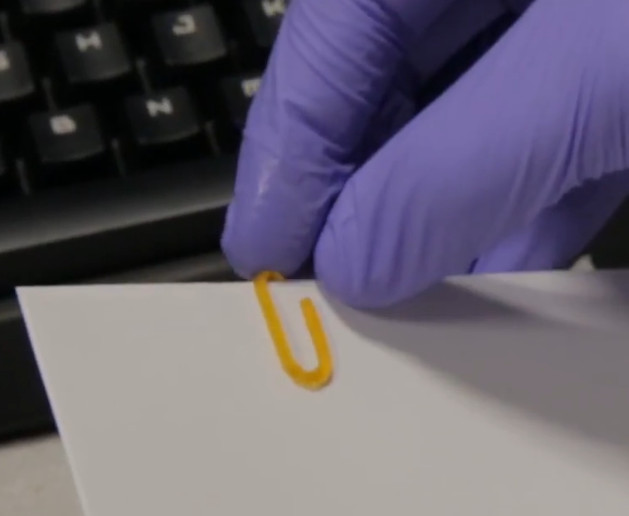That is the question we asked Seamus Blackley, principal scientist at Daqri. The simple answer is that Software Defined Light (SDL) is the ability to allow a computer to directly created 3D light in a way that does require any traditional optical devices.
Most readers will know DAQRI as the company developing helmet type augmented realty gear. But a year ago, the company bought Two Trees Photonics (see DAQRI Acquires Holographic Projection Provider Two Trees Photonics), which is selling Head-up Display systems in hundreds of thousands of cars today. This basic SDL technology will be applied to next generation HUD, AR smart helmets and 3D printing, we were told. The main project that Blackley is working on is 3D printing.
But the 3D printing developments are fascinating and clearly have Blakely very excited about the possibilities. Blackley is well known already in the gaming community as the “father of the Xbox” when he worked at Microsoft. He is a high energy physicist by training and owns a lab in Pasadena, California. DAQRI’s CEO Brian Mullins and Two Trees CTO Jamie Christmas apparently visited Blackley and started discussing the SDL technology and what it might enable – which is considerable. One idea was SDL-based instant 3D printing, which is what Blackley decided to pursue after joining the company.
3D printing today is a layer-by-layer process. But what if you could create a hologram that filled a volume of photo-activated materials? That’s the idea – create the 3D object in one exposure. Blackely has proved you can do this in his laboratory, so it is not yet a commercial process and it still has limitations. Right now, the exposure volume is probably less than 10 x 10 x 10mm using a green laser. That’s enough to create a polymer paperclip in a few seconds, but to enable a bigger exposure volume will require larger spatial light modulators with more pixels (see video of exposure).
In addition, he is thinking about how to create the chemistry to enable multiple materials to be exposed using different compounds in the mixture and different wavelengths of illumination. Additional lasers can be added to the solution fairly easily, said Blackley.
Clearly, instant 3D printing with a single exposure will be superior to the layer-by-layer approach which can suffer from weaknesses as these layer builds up. The exposure method should also be faster.
Blackley says Daqri is developing an SDL developers kit that includes the spatial light modulator, driver software, graphics API and simulator, a laser and more, but it is only for internal use at this time. No real details behind the company’s technology were revealed, but Blackley did say some interesting things.
 For example, the spatial light modulator is an LCOS panel that is written with a phase pattern instead of an image pattern. The backplane of this device is sourced from a foundry, but Blackley claims the liquid crystal fill and packaging is done internally. Since the backplane is fabricated on silicon, much of the drive circuitry can be integrated on-chip. Currently, Blackley says they have “a million phase elements.” Which we presume means pixels, which is not a lot, but these are packed pretty densely into a 4 x 8mm panel (pixel pitch in the 5.5 to 6.5 micron range).
For example, the spatial light modulator is an LCOS panel that is written with a phase pattern instead of an image pattern. The backplane of this device is sourced from a foundry, but Blackley claims the liquid crystal fill and packaging is done internally. Since the backplane is fabricated on silicon, much of the drive circuitry can be integrated on-chip. Currently, Blackley says they have “a million phase elements.” Which we presume means pixels, which is not a lot, but these are packed pretty densely into a 4 x 8mm panel (pixel pitch in the 5.5 to 6.5 micron range).
But one of the beauties of using a spatial light modulator is that is it very tolerant of dead or defective pixels. A lot can be out and you still get a hologram – you just operate with lower efficiency.
The other big issue with creating a hologram using a spatial light modulator is the computation of the phase pattern needed to write to the panel. Traditionally, this has been done with a Fourier transform, but this is computational intensive making rendering of images in real time very difficult.
Blackely says he went back to the Maxwell equations to try to find a better solution, which he has. He did not say what the solution is, but it does not use a Fourier transform to compute the phase hologram. Based on his background in writing fast graphics engines, he thinks they have a very unique solution.
And he may. For example, one of the advantages of a spatial light modulator approach is the ability to direct all the light only to the parts that require light. There is no blocking of unused light as in conventional imaging systems. This makes the approach ideal for the display of symbology as in a HUD – all the light goes to these icons so they can be bright even in sunlight.
Blackely says he is working on a graphics engine based upon polygons and textures – in other words – a game engine. This can be more quickly transformed to the spatial domain making for a more efficient and faster creation of the phase pattern to drive the spatial light modulator. “These are quite good holograms with some look around capability as well,” explained Blackley.
Next time, I hope to speak with Brian Mullins to learn more about how they plan to apply SDL to augmented reality headsets. I also want to talk to Jamie Christmas again to understand how SDL will enable the creation of two, or maybe more image planes for the auto HUD application. – CC

